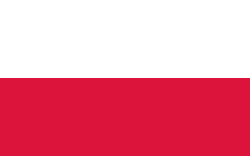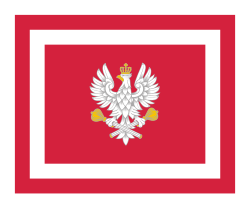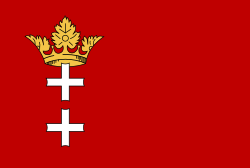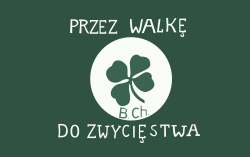
A variety of Polish flags are defined in current Polish national law, either through an act of parliament or a ministerial ordinance. Apart from the national flag, these are mostly military flags, used by one or all branches of the Polish Armed Forces, especially the Polish Navy. Other flags are flown by vessels of non-military uniformed services.
Contents
- National flags
- Military flags
- Rank flags used in all branches of the Armed Forces
- Navy
- Air Force
- Other branches of the Armed Forces
- Flags of the commanders of the units of the Ministry of National Defence
- Flags of other uniformed services
- Naval flags
- Special state service vessels
- Subdivisions flags
- Current voivodeship flags
- Historical voivodeship flags
- Historical flags
- Political flags
- Organizational flags
- Religious flags
- Ethnic flags
- Regional flags
- House flags
- See also
- References
- External links
Most Polish flags feature white and red, the national colors of Poland. The national colors, officially adopted in 1831, are of heraldic origin and derive from the tinctures of the coats of arms of Poland and Lithuania. Additionally, some flags incorporate the white eagle of the Polish coat of arms, while other flags used by the Armed Forces incorporate military eagles, which are variants.
Both variants of the national flag of Poland were officially adopted in 1919, shortly after Poland re-emerged as an independent state in the aftermath of World War I in 1918. Many Polish flags were adopted within the following three years. [1] The designs of most of these flags have been modified only to adjust to the changes in the official rendering of the national coat of arms. Major modifications included a change in the stylization of the eagle from Neoclassicist to Baroque in 1927 and the removal of the crown from the eagle's head during the Communist rule from 1944 to 1990 and replaced the traditional red colour by crimson red. Legal specification for the shades of the national colors has also changed with time. The shade of red was first legally specified as vermilion by a presidential decree of 13 December 1928. [2] This verbal prescription was replaced with coordinates in the CIE 1976 color space by the Coat of Arms Act of 31 January 1980. [3]



























































































































































